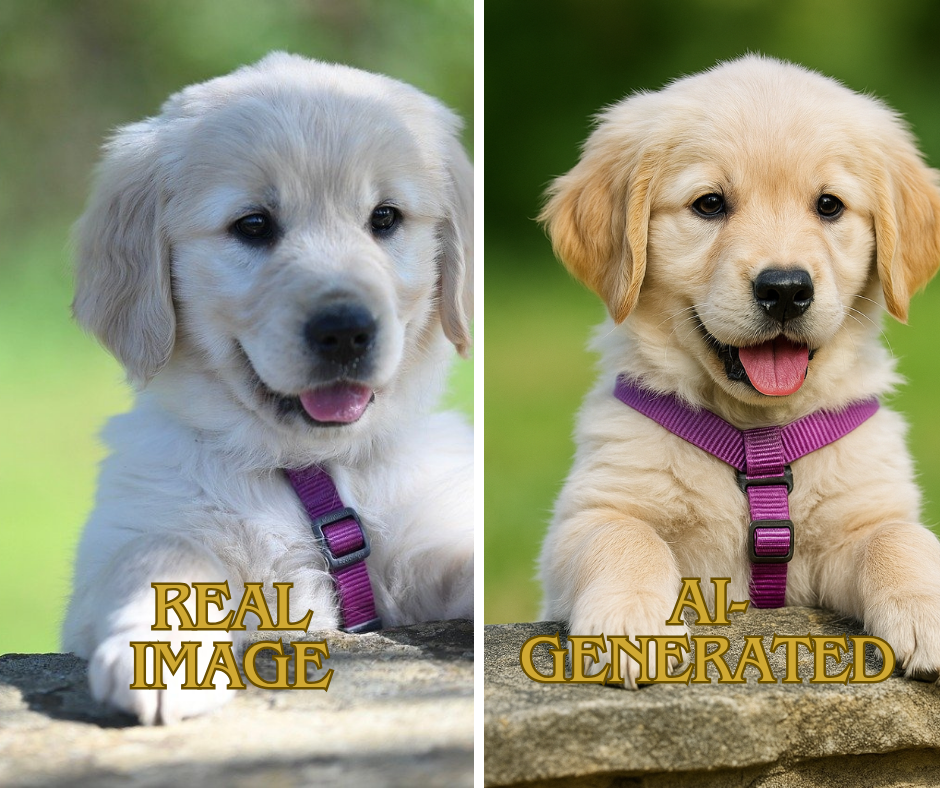Hyper-realistic visuals for Marketing. Useful or Harmful?
June 22, 2025

The visuals we see online today are cinematic, hyper-detailed, human-like, and increasingly hard to tell apart from reality. Our instincts are no longer reliable, and we often find ourselves questioning what’s authentic. It’s the visual equivalent of the “is it cake?” moment—only now it’s applied to online campaigns, social media videos, and digital storytelling.
It’s the visual equivalent of the “is it cake?” moment—only now it’s applied to online campaigns, social media videos, and digital storytelling.
In recent years, artificial intelligence has made a bold entrance into the marketing world, from automating customer service to generating compelling ad copy. But one of the most intriguing and fast-evolving applications is AI-generated visuals: hyper-realistic images and videos created using generative models.
We’re seeing AI visuals used not only in product demos and social media but in full-scale global campaigns. These visuals can look stunningly real, often indistinguishable from those shot in a studio. So, when the result looks impressive and the cost of production is minimal, does realism resonate with people?
Let’s take a closer look at these two case studies:
1. Coca-Cola’s AI-Driven Nostalgia: The 2023 Christmas Ad
A well-known example is Coca-Cola’s 2023 holiday campaign. The brand, famous for its iconic 1995 “Holidays Are Coming” ad, decided to recreate it using AI tools like Runway and other OpenAI’s image models. The campaign celebrated nostalgia while adding a modern twist through AI-generated animation, scenery, and even characters.
The result was technically impressive; the characters looked real, and emotional music played in the background. However, people complained that something deeper was missing. Online comments called it “soulless” and missed the warmth and imperfections of the original.
“Soulless” and missed the warmth and imperfections of the original.
Why Did It Fall Short?
- Overly perfect visuals: AI tends to smooth out flaws, making the ad feel synthetic.
- Lack of human spontaneity: Real actors and real moments create micro-emotions that AI still struggles to replicate.
- Audience awareness: Today’s viewers are highly aware of AI content, and skepticism runs high, especially when brands use it in emotionally sensitive contexts.
2. Another Case: Levi’s AI Models Controversy
In early 2023, Levi’s partnered with fashion-tech startup Lalaland.ai to introduce AI-generated models showcasing a wider range of sizes, ages, and skin tones. The project aimed to “supplement human models” in their online storefront for a more inclusive shopping experience.
However, the campaign sparked a significant backlash:
Some critics argued Levi’s replaced real representation with AI-generated diversity, which some described as ‘digital Blackface.’ Critics argued it was a cost-saving ploy, sidelining professional models and production staff.
In response, Levi’s issued a statement clarifying that AI models were not a substitute for diversity efforts or replacing real models, emphasizing that live photo shoots and professional hires would continue.
AI visuals Marketing: Trends & Numbers
Beyond controversies, AI visuals are new, exciting, and mostly liked by the audience. They are used for:
- Product prototyping and ads (e.g., furniture or fashion brands visualizing products in custom environments).
- Personalized content for email campaigns or social media.
Marketers embrace the change:
According to SurveyMonkey, 69% of marketing professionals feel excited about AI technology and its impact on their jobs (SurveyMonkey).
And the results are measurable:
AI-generated images often look more realistic than human-made ones. In one real-world example, an AI-made banner ad had a 50% higher click-through rate than a stock photo (Aktuelles).

Common Pitfalls to Avoid
- Overreliance on novelty: Don’t use AI just because it’s trendy. Only use it if it helps convey the message.
- Ethical shortcuts: Using AI to mimic real people without their consent is ethically wrong. In addition, these models are trained on large datasets, which can amplify existing social biases and stereotypes. Without human review, the outcome might come off as tone-deaf.
- Low-resolution visuals: If you can spot weird hands, blurry details, or distorted backgrounds, your audience can too.
Top Tools for Realistic AI Visuals
- Midjourney: Great for artistic and surreal imagery. Less control over fine detail, but high visual impact.
- Runway ML: Useful for editing video and generating short clips or animations.
- Pika Labs: Emerging player for realistic AI videos.
- DALL·E by OpenAI: High-quality still images, especially with the inpainting tool for revisions.
- Leonardo.ai: Good for gaming, fashion, or high-detail product visuals.
Conclusion: Realism in AI is a blessing and a curse
AI visuals are a powerful tool—but like any tool, they require the right hands. When used thoughtfully, they enhance creativity, speed, and storytelling. But when used carelessly, they risk becoming noise. In 2025, the winning campaigns won’t just look real—they’ll feel real. And that still takes human judgment.